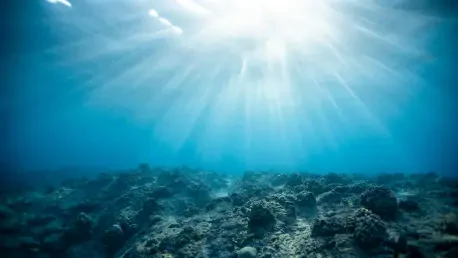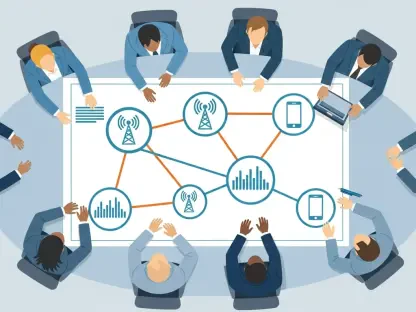For decades, undersea internet cables have served as the backbone of global digital communication, facilitating everything from personal emails to complex international commerce. These intricate networks, lying silently beneath the world’s oceans, have faced new challenges and threats, with state-led sabotage emerging as a significant risk. An alarming rise in attempts to disrupt or damage these critical infrastructures is particularly concerning where alternative routes are limited. Nations such as Russia and China have been linked to suspicious activities near these cables, raising questions about geopolitical intentions and the potency of digital warfare tactics.
Growing Threats to Undersea Cable Infrastructure
Geopolitical Motivations Behind Cable Damage
Recent analyses have highlighted an increase in sabotage incidents targeting undersea cables, underscoring a worrying trend that emphasizes state involvement. Between 2024 and 2025, dozens of incidents of cable damage across multiple clusters were recorded, with causes ranging from natural phenomena to direct interference linked to state actors. Increased military presence or suspicious maritime activities near cable routes heightens the concern that these infrastructures could serve as pawns in geopolitical conflicts. Notably, areas such as the Baltic Sea and waters near Taiwan have reported frequent disruptions, hinting at strategic interests and the potential for indirect involvement by countries like Russia and China.
Vulnerabilities due to Lack of Redundancy
The global dispersion of undersea cables is vast, yet not uniform, leaving certain regions highly vulnerable due to insufficient alternative connections. West and Central Africa, alongside isolated Pacific islands, possess minimal redundancy in their internet infrastructure, rendering them susceptible to significant disruptions when cables fail or are damaged. Repairing these cables is arduous, with average restoration times stretching over a month due to logistical bottlenecks and regulatory challenges. The slow repair process exacerbates the impact on regions heavily dependent on these cables, resulting in prolonged network outages that cripple digital communication and commerce.
Strengthening Digital Resilience
Importance of Surveillance and Maintenance Investment
The growing threats demand an urgent call to action, focusing on enhancing surveillance and maintenance capabilities of undersea cables. Investments must be directed towards developing advanced monitoring technologies to detect suspicious activities early on and deploying robust maintenance strategies that ensure quick repair and restoration. Public-private partnerships are vital in this regard, pooling resources and expertise that can strengthen infrastructure protection. By leveraging the capabilities of both sectors, strategies can be developed to anticipate, counter, and mitigate potential threats more effectively, safeguarding crucial digital pathways from malicious interference.
Strategic Protection Against Threats
Additionally, safeguarding these cables requires recognizing their strategic importance in geopolitical contexts, emphasizing the need for international cooperation and protocol development. Frameworks encouraging regional collaborations can help share critical intelligence and coordinate defensive measures against threats to these infrastructure systems. Countries in Europe with robust infrastructures still face risks tied to geopolitical tensions, underscoring why entities like Malta, Cyprus, and Ireland with fewer redundancies should prioritize safeguards. Directing attention towards vulnerable spots facilitates proactive measures, ensuring digital resilience and maintaining global connectivity.
The Imperative of Digital Security Measures
Learning from Past Incidents
No stranger to disruptions, past anchor incidents around the Red Sea and Africa’s coasts have illustrated the tangible effects of vulnerabilities in undersea cables. These events serve as reminders of the real-world consequences that follow when critical communications networks suffer damage. Lessons learned highlight the necessity of improved international collaboration in addressing repair and maintenance challenges, ensuring faster response times and more effective redundancy solutions. The geopolitical stakes associated with these infrastructures make their protection a priority, demanding coordinated defensive measures to uphold security and resilience.
Future Considerations for Enhanced Protection
For many years, undersea internet cables have been crucial to global digital communication, enabling everything from sending personal emails to conducting complex international business transactions. These sophisticated networks, lying quietly beneath the vast oceans, now face new threats and challenges, with state-led sabotage becoming a major concern. There has been a concerning uptick in attempts to disrupt or damage these essential infrastructures, especially in areas where alternative routes are either scarce or nonexistent. Countries such as Russia and China have been linked to suspicious activities near these cables, which raises serious questions about their geopolitical motives and the strength of digital warfare techniques they may employ. The implications of such sabotage are far-reaching, potentially impacting global communication and the seamless operation of businesses worldwide. As these threats loom large, there is an increased push for international cooperation to safeguard these vital structures and ensure the continuity of global connectivity in the digital age.









